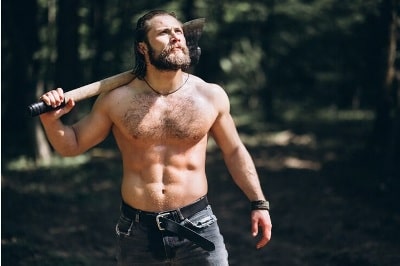History and Evolution of Male Stereotypes in Media: An Analysis of How Media Shapes Masculinity

The portrayal of men in media has always been a subject of controversy. From being the stoic and rugged hero to the flawed and vulnerable anti-hero, media has shaped our perceptions of what it means to be a man. The evolution of male stereotypes in media is a reflection of the changing social and cultural values of our society. This article will explore the history of male stereotypes in media and analyze their impact on masculinity.
The History of Male Stereotypes in Media
The portrayal of men in media has gone through significant changes over the years. In the early days of Hollywood, men were depicted as strong and stoic, with a focus on their physical prowess. This is evident in movies such as “The Adventures of Robin Hood” (1938) and “Tarzan the Ape Man” (1932), where male characters were depicted as brave and fearless.
During the 1950s, male stereotypes shifted towards the “ideal” family man. Men were portrayed as the breadwinners who worked hard to provide for their families. TV shows like “Father Knows Best” (1954) and “Leave It to Beaver” (1957) depicted fathers as the head of the household, responsible for making important decisions and keeping the family together.
In the 1960s, the portrayal of men in media shifted again towards the rugged, anti-hero type. This was reflected in movies like “Cool Hand Luke” (1967) and TV shows like “The Fugitive” (1963), where male characters were depicted as rebels who defied authority and had a sense of freedom and individuality.
The 1970s saw a rise in the portrayal of men as sexually promiscuous and adventurous. This was reflected in movies like “Saturday Night Fever” (1977) and TV shows like “Three’s Company” (1977), where male characters were depicted as sexually liberated and carefree.
In the 1980s and 1990s, male stereotypes shifted towards the “macho man” image. Men were depicted as muscular and aggressive, with a focus on violence and action. Movies like “Die Hard” (1988) and “Terminator 2: Judgment Day” (1991) portrayed male characters as tough and invincible.
In recent years, there has been a growing awareness of the negative impact of traditional male stereotypes in media. The rise of the #MeToo movement has brought attention to the harmful effects of toxic masculinity, and media has responded by portraying more diverse and nuanced male characters.
The Impact of Male Stereotypes in Media on Masculinity
The portrayal of men in media has a significant impact on how we perceive masculinity. Traditional male stereotypes in media can reinforce harmful gender norms and perpetuate toxic masculinity.
One of the most significant impacts of male stereotypes in media is on body image. The idealized male body type portrayed in media can lead to body dissatisfaction and unhealthy body image issues. This is particularly evident in the fitness industry, where men are often portrayed as muscular and ripped.
Traditional male stereotypes in media can also perpetuate harmful gender roles. Men are often portrayed as the dominant and aggressive gender, which can lead to a culture of violence and abuse. This is evident in the prevalence of sexual assault and domestic violence.
Moreover, traditional male stereotypes can limit men’s emotional expression and stifle their mental health. Men are often portrayed as emotionally stoic and unresponsive, which can lead to a reluctance to seek help for mental health issues. This is reflected in the high rates of suicide among men.
The Future of Male Stereotypes in Media
There is a growing awareness of the negative impact of traditional male stereotypes in media. As a result, there has been a shift towards more diverse and nuanced portrayals of male characters in media. This includes the portrayal of men as emotionally vulnerable and empathetic, as well as the inclusion of men from diverse backgrounds and sexual orientations.
One example of this shift is in the portrayal of fatherhood in media. While the traditional image of the father as the breadwinner and head of the household still persists in some media, there has been a rise in the portrayal of fathers as caring and involved parents. TV shows like “Modern Family” (2009) and “This Is Us” (2016) have portrayed fathers as emotionally vulnerable and dedicated to their families.
Another example is the portrayal of male friendships in media. Traditionally, male friendships have been depicted as competitive and emotionally distant. However, recent media portrayals of male friendships, such as in the TV show “Brooklyn Nine-Nine” (2013), have emphasized the importance of emotional support and vulnerability in male friendships.
Overall, the future of male stereotypes in media seems to be moving towards a more inclusive and diverse representation of masculinity. By portraying more diverse and nuanced male characters, media has the potential to break down harmful gender norms and promote a healthier understanding of masculinity.
The history of male stereotypes in media reflects the changing social and cultural values of our society. From the stoic hero of Hollywood’s golden age to the emotionally vulnerable male characters of today’s media, the portrayal of men in media has evolved over time.
Traditional male stereotypes in media can reinforce harmful gender norms and perpetuate toxic masculinity. By limiting men’s emotional expression and perpetuating harmful gender roles, traditional male stereotypes in media can have a significant impact on men’s mental health and well-being.
The future of male stereotypes in media seems to be moving towards a more inclusive and diverse representation of masculinity. By portraying more diverse and nuanced male characters, media has the potential to break down harmful gender norms and promote a healthier understanding of masculinity.